QuestionI got my daughter a very young female guinea pig last May and she is very healthy. My other daughter would like one and I thought the best option was to breed the female I have hoping they can cage together. I have a friend who has a similar aged male and he is very healthy also. I have Manu people interested in the babies if we end up with males or more than one female. What are some things I should consider before we make a decision for or against breeding?
AnswerIf you're going to breed her you need to put her in breeding now. Guinea pigs are very precocious and develop at a very early age. Breeders use the rule of thumb 'breed them by the time they're a year old.' That's a generality and most pigs are put into breeding before that.
You may hear or read that after a year old the pelvic bones fuse making delivery impossible. That's not exactly what happens. The pelvic bones do not fuse, in fact they don't even touch one another anymore than a human female's pelvic bones do. What happens is the ligaments that are responsible for pulling the bones apart to facilitate delivery can begin to lose their elasticity thus making the pelvis unable to open to pass the babies.
That is not an absolute in every case. It does not mean that there is a danger in breeding a one year old pig. It's just a guideline. But it's a wise one, so that's why you should put her into breeding now rather than wait any longer.
The gestation period is approx. 70 days or 10 weeks. That's six weeks longer than a rabbit, which is why the babies are born so fully developed. They are born fully furred, mouthful of teeth, eyes open and ready to run. They're the cutest things you ever saw.
Before you make the final decision you should be aware of the risks. Mortality is much higher in guinea pigs that any other animal. The potential for loss of both mother and babies is high, so you should think about that before making the decision.
It's very common that at least one baby is stillborn. Most often they will deliver two to four pups. One may be very large and there will be one that is very small. The small ones are the ones that often don't survive. Nature has provided wisely by allowing only the fittest to survive. If they're going to be able to survive in a wild setting they must be healthy and strong.
Unlike humans, animals will not nurture the weak babies. They allow Nature to take its course. They won't risk the wellbeing of healthy babies by slowing down for the weak. Human nature has us hard wired to want to save them all but that's not always the best thing. You should discuss this with your daughter so that she understands that this is the way it's meant to be. If a mom rejects a baby it's not because she's a bad mom. She's just protecting the others.
Cavies come into heat on an irregular basis. Some come into heat every two weeks, some every three or so. They're only in heat for a few hours at a time so if you introduce the boar you will not necessarily know the exact date of conception. The boar is ready all the time (in typical male fashion). The sow will let him know when she is receptive and until then she will not allow his advances. They have a characteristic defense that repels the old boy in a flash if he gets out of line. The sow will arch her back slightly, then shoot a stream of urine straight into his face. That cools his jets immediately until she says it's time.
When you put the boar in the cage it's best to leave him there no less than one month. That way you have hopefully covered her for two heats, even then it doesn't always happen that quickly. I leave mine with the boar until the sow is obviously great with child, then I remove him.
Guinea pigs are great dads. They will love and cuddle the babies, help with diaper duty, allow the pups to climb all over them and will keep them warm and safe. The sow will come into heat within hours of delivery at which time he will breed her back. Baby sows can come into heat as young as two weeks, and the dad will breed them as well. So for that reason it's best to remove him before the babies come along.
Most deliveries happen in the wee hours of the morning. But sometimes you get lucky and will get to see the miracle happen. The mom will not allow the pups to nurse until she has completely cleansed herself out. Occasionally you will see a mom appearing to avoid the babies for several hours.
Once she's passed the last of the afterbirths, etc. she will take over. Don't try to hand feed the babies at this point. They can go many hours without nourishment. But they will also easily aspirate and die if you try to intervene. The mom's instincts are very strong and she will know when the right time comes. Remarkably the babies know to stay right where they were born until mom says okay.
You can handle the babies once they're dry. Be cautious. They are very fast and can easily leap right out of your arms. So be sure you are holding them securely.
The only other thing you need to do is keep the camera handy. They grow fast and develop quickly, so pictures are fun so you can watch their day to day changes.
Good luck to you and the momma. Hope this gives you a pretty good idea of what to expect. Please don't hesitate to ask if you have anymore questions. That's what we're here for.

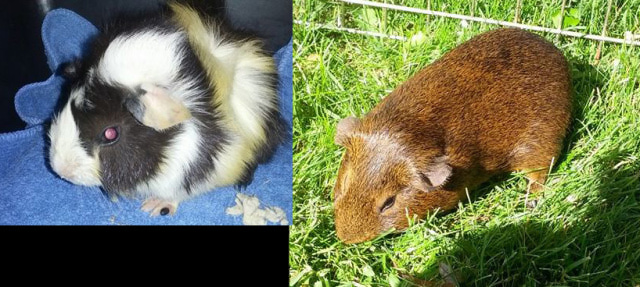 Skittish Guinea Pig
QuestionQUESTION: Hi, I got a guinea pig from PetSmart
Skittish Guinea Pig
QuestionQUESTION: Hi, I got a guinea pig from PetSmart
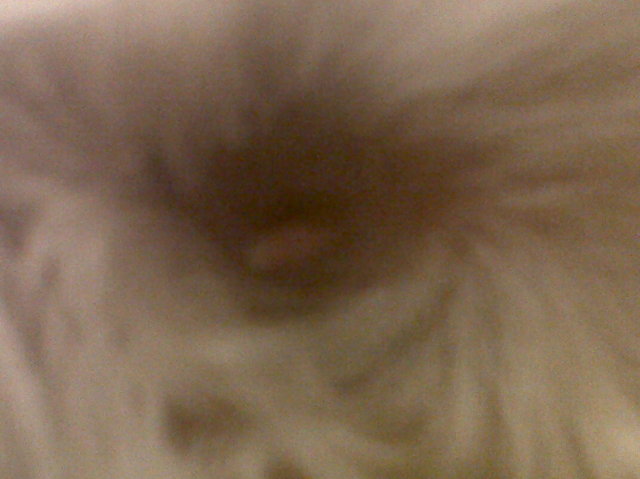 hello.
Question
guinea pigs nipple
Hello Im stephanie.
hello.
Question
guinea pigs nipple
Hello Im stephanie.
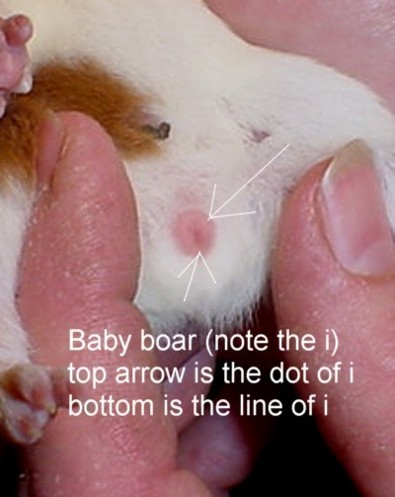 What is my guinea pig doing?
QuestionQUESTION: Hi!
I have 2 female guinea pigs, one
What is my guinea pig doing?
QuestionQUESTION: Hi!
I have 2 female guinea pigs, one
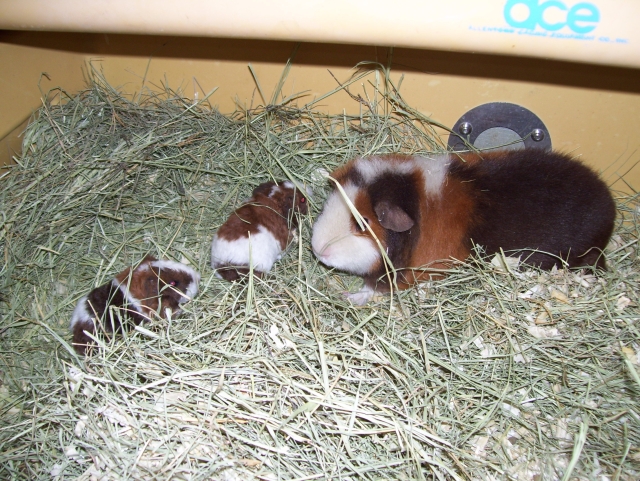 pregnat guinea pig
QuestionHi Im Megan and I think my guinea pig is pregna
pregnat guinea pig
QuestionHi Im Megan and I think my guinea pig is pregna
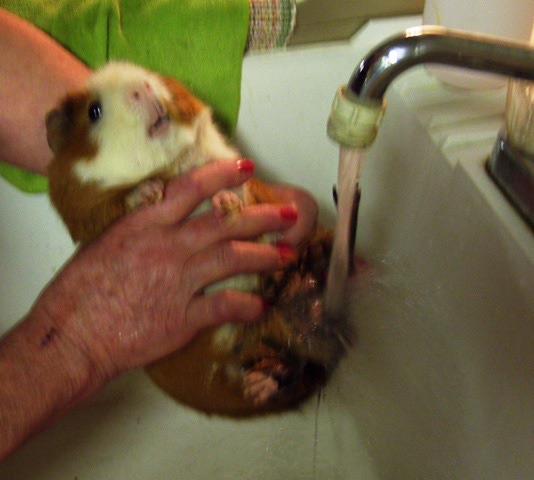 dark oily dandruff on lower back
QuestionQUESTION: Hi! I have a 1 1/2 year old boar who
dark oily dandruff on lower back
QuestionQUESTION: Hi! I have a 1 1/2 year old boar who